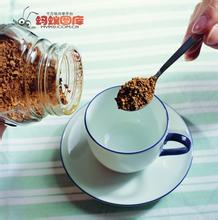Introduction to the characteristics of Coffee Flavor Manor in Sidamo Chiso producing area of Ethiopia
(1) Ethiopian people's Revolutionary Democratic Front (The Ethiopian People's Revolutionary Democratic Front,EPRDF): EGF, the ruling party. Formed in 1989 with the Tigre people's Liberation Front (PLF) as the core, the member parties include the Amhara National Democratic Movement, the Oromo people's Democratic Organization and the people's Democratic Front of Southern Ethiopia, representing 24 major ethnic groups. The decision-making body is an executive committee composed of 36 members. At home, we actively pursue the policies of multi-party parliamentary democracy and market economy, respect the right of all nations to self-determination, and advocate the development of cooperation with other countries on the basis of equality, mutual respect and non-interference in internal affairs, and the implementation of the regional power strategy. He won multi-party elections in 1995, 2000, 2005 and 2010. It accounts for 499 seats in the current people's Assembly. The current chairman, Haile Mariam.
(2) United Democratic Alliance Party (Coalition for Unity and Democracy Party): the main opposition party. It was formed by the merger of four member parties of the former opposition coalition Solidarity Democratic Alliance in September 2005 and occupies one seat in the current people's Assembly. Oppose the current federal system, advocate land privatization, and oppose the government's position on the border issue between Ethiopia and Eritrea.
Political dignitaries
President Mulatu Teshome. He studied Chinese at Beijing language and Culture University (now Beijing language and Culture University) from 1976 to 1977; studied at the Department of philosophy of Peking University from 1977 to 1982; studied for a master's degree in the Department of National Politics of Peking University from 1984 to 1988; and studied for a doctorate in the Department of National Politics of Peking University from 1990 to 1991. He has served as Ethiopia's ambassador to Japan, Australia, China and other countries, as well as the minister of state of the Ministry of Economic Development and Cooperation, the minister of agriculture and the speaker of the Federal Council of Parliament. Mulatu Teshome was elected as the new president of Ethiopia on October 7, 2013.
Prime Minister Haile Mariam de Saleni. Born in 1965, Valeta. He has served as a member of the Southern State Councillor, a member of the Federal Council, a deputy governor of the Southern State, a governor, a leader of the EFP parliamentary caucus, an adviser to the Prime Minister's public organization and mobilization, and chairman of the Railway Bureau. He was elected Vice-Chairman of EGF in September 2010 and Deputy Prime Minister and Foreign Minister in October. Prime Minister Meles took over as Chairman and Prime Minister of EGF in September 2012 after his death.
Sidamo grows in the southernmost Ethiopian plateau between 4600 and 7200 feet above sea level (Sidamo province). It is a famous boutique coffee area in southern Ethiopia, bordering Kenya, southeast of Gemma, just south of the capital, usually sweet and loved by most people. its annual output is about 225000 bags / 60kg, with a smaller bean body than Longberry, with gray in the green, and in the sun drying field in Sidamo. Coffee is placed in hemp net wooden frame, workers take turns in the sun exposure, manual stirring coffee, sun Sidamo is usually marked with G4 exit, washing Sidamo because the treatment process is more perfect, so most of them are exported at G2 level.
The coffee in Sidamo has a variety of flavors. Different soil types, microclimates and countless native coffee species, towering mountains, highlands, plateaus, valleys and plains, diverse topography, and the geology of the area belongs to nutrient-rich, well-drained volcanic soil. the depth of the soil is nearly two meters, and the surface soil is dark brown or brown. The biggest advantage of the area is that the soil fertility is maintained through the circulation of organic matter, using the withered leaves of the surrounding trees or the residual roots of the plants as fertilizer. Therefore, the coffee produced in cities and towns has obvious differences and characteristics. In 2010-2012, it continuously obtained the high score of CR92~94, the authoritative coffee evaluation website in the United States. Thus it can be seen that the raw beans in this area are extraordinary.
Sidamo Coffee beans are grayish, thick in some places and small in others, with soft and strong acidity, mellow and sweet and spicy. It is one of the courtyard coffees in the highlands of southern Ethiopia. Unlike ordinary African coffee, Sidamo has clear acidity, smooth taste and delicate floral smell.

Important Notice :
前街咖啡 FrontStreet Coffee has moved to new addredd:
FrontStreet Coffee Address: 315,Donghua East Road,GuangZhou
Tel:020 38364473
- Prev

Introduction to the flavor and taste characteristics of Ethiopian coffee manor with soft acidity
There are mainly mountain plateaus in Ethiopia, and the central and western regions are the main part of the plateau, accounting for 2% of the whole territory. The East African Rift Valley runs through the whole territory, with an average elevation of nearly 3000 meters, which is known as the roof of Africa. The terrain around the plateau is gradually declining. The Darol depression in the north fell to 113 meters below sea level, the lowest point in the country. A narrow banded plain along the coast of the Red Sea
- Next

Ethiopian Kocher Estate Coffee Flavor Taste Estate Features
Light Rail: On the morning of September 20, 2015, Addis Ababa Light Rail, the capital of Ethiopia, which was constructed by China Railway Corporation and provided operation and management services by Shenzhen Metro Group, was officially put into operation. Addis Ababa Light Rail Project consists of east-west line and north-south line. The planned main line of the project is about 75km long. The first phase of light rail project will be implemented this time, with the total length of main line of 31.048km(including 2.662km of common rail section).
Related
- Does Rose Summer choose Blue, Green or Red? Detailed explanation of Rose Summer Coffee plots and Classification in Panamanian Jade Manor
- What is the difference between the origin, producing area, processing plant, cooperative and manor of coffee beans?
- How fine does the espresso powder fit? how to grind the espresso?
- Sca coffee roasting degree color card coffee roasting degree 8 roasting color values what do you mean?
- The practice of lattes: how to make lattes at home
- Introduction to Indonesian Fine Coffee beans-- Java Coffee producing area of Indonesian Arabica Coffee
- How much will the flavor of light and medium roasted rose summer be expressed? What baking level is rose summer suitable for?
- Introduction to the characteristics of washing, sun-drying or wet-planing coffee commonly used in Mantenin, Indonesia
- Price characteristics of Arabica Coffee Bean Starbucks introduction to Manning Coffee Bean Taste producing area Variety Manor
- What is the authentic Yega flavor? What are the flavor characteristics of the really excellent Yejasuffi coffee beans?

